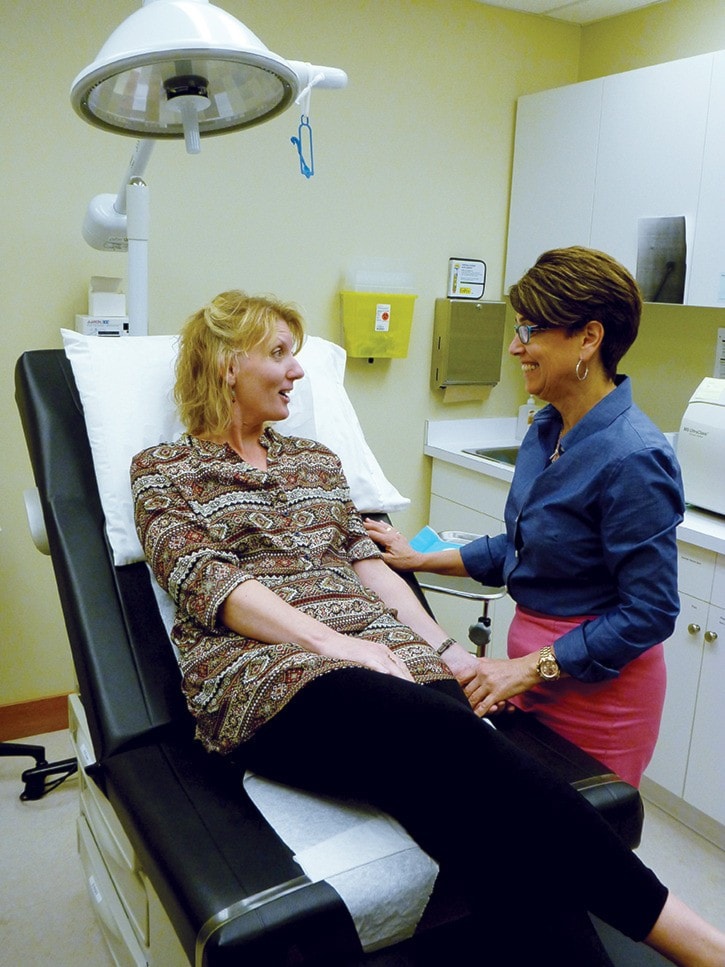As one door closes, another opens.
Nurse practitioner Lori Verigin believes positive change will come from the closure of Selkirk Family Medicine, set to shut its doors Dec. 11.
The Trail professional is part of the team at Waneta Primary Care Clinic and a board member of the Kootenay Boundary Division of Family Practice (Divisions), which represents all the doctors across the 14 communities in the region.
The medical community and municipal leaders have met and continue to hash out possible solutions for upwards of 1,000 patients who will be without a family doctor when the facility closes.
After 41 years of service, Dr. Trudi Toews was in the process of retiring but has to close her practice promptly due to medical reasons.
The short-term fix could involve existing facilities opening up space for new patients while the larger solution looks to the future of primary care in the region.
“What we need to do is to be more innovative about how we solve primary health care problems in the communities,” Verigin said from her Trail clinic. “So often I just hear ‘Oh you just need more physicians,’ but really what we need is more health care providers. We need to do things differently because the traditional model is very limiting.”
There is a growing consensus that family physicians, nurses, and other professionals working as partners will result in better satisfaction for both patients and providers. The team-based approach is already being rolled out, and Verigin is just one example of how health professionals can work together to deliver primary care.
The Interior Health (IH) employee is Dr. Blair Stanley’s partner at the clinic. Her scope of practice is similar to a physician, with most limitations legislative in areas like prescriptive authority.
“The beauty of having a nurse practitioner and physician is how we see the patient,” she said. Ninety per cent of the time she can address her patient’s needs but if she does need some clarification or a professional to consult with, Dr. Stanley is just down the hall.
The clinic’s model is healthy, according to statistics compiled in 2007 and 2011. The patient list nearly doubled to 2,000 people during those four years, yet fewer made their way to the emergency room. That says something about the level of care provided by the team at the clinic.
“I think every clinic in town wants a nurse practitioner, and I’m not sure why every clinic in town doesn’t have one,” said Dr. Susan Benzer, head of the department of family practice at the Trail hospital. “But I think they’re rolling it out and seeing how it works, and it seems hugely successful.”
She expects similar models will crop up in the near future and even counts on an even broader range of professionals like mental health workers, social workers, and nurse practitioners all working together in a team-based setting.
“That is currently an evolving process and there are opportunities for the office to have these other members of the team to come in and work in their clinic and help them out with complex patients and patients with special needs,” she added.
Dr. Lee MacKay already has on-the-ground experience of new modes of working, pointing to the Nelson Medical Associates Clinic, which is currently piloting a new team-based care project that incorporates a social worker in the practice.
“We, as family doctors, get left with dealing with all kinds of medical issues but also some family and personal issues that sometimes somebody else could provide just as well,” he said. “It is natural to kind of really have a compliment of health providers so that the provision of care is being done by the most appropriate person, with the most appropriate training.”
The 34-year-old’s resume stretches far beyond his years. Dr. MacKay is the board chair of Divisions and is involved in discussions on the future of primary care at the regional and provincial level.
He believes this kind of professional atmosphere is what today’s doctor wants.
Baby boomers are retiring and need to be replaced, he added, and a new era of doctors moving in are more sub-specialized, which makes the transfer not so cut and dry.
Currently, there are 25 family doctors working in office practices in the Trail area. Though doctor shortages may feel close to home with the pending closure of Selkirk, Dr. Benzer said there are only two positions that need to be filled shortly and recruitment is ongoing.
“This is not a trend,” she said. “(Selkirk) is a very unique situation. There is a lot of tragedy in the clinic with the doctors, and it just has become unsustainable to keep the clinic open.”
Primary care has changed dramatically in the 20 years Dr. Benzer has worked in her field. She watched the Trail Regional Hospital become KBRH—a switch that changed the landscape of medicine in the hospital.
The emergency department could no longer hack it with just family doctors, so those trained in emergency medicine were brought in to help out. Caring for patients beyond local borders also prompted a need for a hospitalist program.
“(Now) the big change is that because of need and to improve patient care, family doctors have sub-specialized into areas that do not always include an office practice,” said Benzer.
But there will always be professionals who are drawn to the continuity of care delivered in a clinic setting, she added.
The hard work and overhead tend to offset the privilege of watching a patient grow, overcome and fight for better health and eventually pass on.
